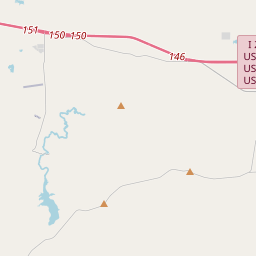Formation of Ayres Natural Bridge
Historical marker location:
Douglas, Wyoming
( Marker can be reached from Natural Bridge Road (County Road 13) 2.5 miles south of Spring Canyon Road (County Road 11).)







© OpenStreetMap contributors
Wyoming was the location of the world's first commercial oil well, which was drilled in 1859 near present-day Casper.
About Converse County
Converse County Timeline
Converse County, Wyoming has a rich history that dates back thousands of years. Prior to the arrival of European settlers, the region was inhabited by various Native American tribes, including the Arapaho, Cheyenne, and Sioux. These tribes relied on the abundant natural resources of the area, such as buffalo and the Platte River, for sustenance and trade.
In the 19th century, Converse County became an important hub for the American fur trade, attracting both traders and settlers. The discovery of gold in the nearby Black Hills of South Dakota in the late 1870s further fueled the growth in the area. In 1888, Converse County was officially established, named after A.R. Converse, a prominent Wyoming banker and politician.
The expansion of the railroad network in the late 19th century greatly influenced the development of Converse County. The arrival of the railroad allowed for easier transportation of goods and people, leading to the establishment of several towns, including Douglas, the county seat. Douglas became a major shipping and trading center for the region, facilitating the growth of agriculture and ranching industries.
Throughout the 20th century, Converse County experienced various economic booms, primarily driven by the discovery and extraction of natural resources. In the early 20th century, oil and gas were discovered in the county, leading to the establishment of oil fields and refineries. This industry continues to be a significant part of the county's economy to this day.
In summary, Converse County's history is characterized by the influence of Native American tribes, the growth of the fur trade, the impact of the railroad, and the development of the oil and gas industry. Today, Converse County remains an important part of Wyoming's economy and heritage.
In the 19th century, Converse County became an important hub for the American fur trade, attracting both traders and settlers. The discovery of gold in the nearby Black Hills of South Dakota in the late 1870s further fueled the growth in the area. In 1888, Converse County was officially established, named after A.R. Converse, a prominent Wyoming banker and politician.
The expansion of the railroad network in the late 19th century greatly influenced the development of Converse County. The arrival of the railroad allowed for easier transportation of goods and people, leading to the establishment of several towns, including Douglas, the county seat. Douglas became a major shipping and trading center for the region, facilitating the growth of agriculture and ranching industries.
Throughout the 20th century, Converse County experienced various economic booms, primarily driven by the discovery and extraction of natural resources. In the early 20th century, oil and gas were discovered in the county, leading to the establishment of oil fields and refineries. This industry continues to be a significant part of the county's economy to this day.
In summary, Converse County's history is characterized by the influence of Native American tribes, the growth of the fur trade, the impact of the railroad, and the development of the oil and gas industry. Today, Converse County remains an important part of Wyoming's economy and heritage.
Converse County Timeline
This timeline provides a concise overview of the key events in the history of Converse County, Wyoming.
- 1860: Early settlers arrive in the area now known as Converse County.
- 1888: The county is officially established on March 9.
- 1889: The town of Douglas is founded and becomes the county seat.
- 1892: The Burlington Railroad reaches Douglas, bringing significant economic growth.
- 1910: The Wyoming State Hospital is established in Douglas.
- 1916: Glenrock is incorporated as a town.
- 1922: Oil is discovered in the Lance Creek oil field, leading to an oil boom in the region.
- 1950s: The oil industry continues to thrive, bringing economic prosperity.
- 1961: Thunder Basin National Grassland is established in northeastern Converse County.
- 1976: Ayer Natural Bridge, a popular geological formation, is listed on the National Register of Historic Places.
- 1990s: The county experiences an economic downturn due to decreasing oil prices.
- 2000s: Efforts are made to diversify the economy, focusing on tourism and new industries.